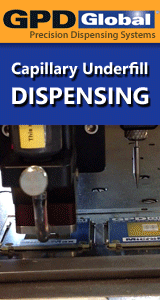Printed Circuit Board Assembly & PCB Design Forum
SMT electronics assembly manufacturing forum.
- SMTnet
- »
- Electronics Forum
- »
- Solder cover
Solder cover
Views: 10220
![]() Hello Sir.
Our customer asked me why the solder did not co...
- Mar 03, 2010
by
Jeong Ju-young
Hello Sir.
Our customer asked me why the solder did not co...
- Mar 03, 2010
by
Jeong Ju-young
![]()
![]()
![]() The picture shows that the heel of the device lead is not on...
- Mar 03, 2010
by
Graham
The picture shows that the heel of the device lead is not on...
- Mar 03, 2010
by
Graham
![]()
![]()
![]() I agree with Graham.
What isn't clear is the cause; Was th...
- Mar 03, 2010
by
isd.jww
I agree with Graham.
What isn't clear is the cause; Was th...
- Mar 03, 2010
by
isd.jww
![]()
![]()
![]() Hello Graham Copper.
Thanks for yr comment. I will review t...
- Mar 03, 2010
by
Jeong Ju-young
Hello Graham Copper.
Thanks for yr comment. I will review t...
- Mar 03, 2010
by
Jeong Ju-young
![]()
![]()
![]() If your "engineer reviewed the reflow profile and said this ...
- Mar 03, 2010
by
davef
If your "engineer reviewed the reflow profile and said this ...
- Mar 03, 2010
by
davef
![]()
![]()
![]() Hi,
Do you have a picture on one of these leads where the s...
- Mar 05, 2010
by
Graham
Hi,
Do you have a picture on one of these leads where the s...
- Mar 05, 2010
by
Graham
![]()
![]()
![]() Ya, that could be happened bcoz of reflow profile.I think, i...
- Mar 05, 2010
by
Jacki
Ya, that could be happened bcoz of reflow profile.I think, i...
- Mar 05, 2010
by
Jacki
![]()
![]()
![]() Are both photocouplers exactly the same ?
More importantly...
- Mar 05, 2010
by
Graham
Are both photocouplers exactly the same ?
More importantly...
- Mar 05, 2010
by
Graham
![]()
![]()
![]() Hello Guys.
Many thanks for your interest in this matter.
...
- Mar 05, 2010
by
Jeong Ju-young
Hello Guys.
Many thanks for your interest in this matter.
...
- Mar 05, 2010
by
Jeong Ju-young
![]()
![]()
![]() Unfortunately, what you are calling a good fillet is not a g...
- Mar 06, 2010
by
isd.jww
Unfortunately, what you are calling a good fillet is not a g...
- Mar 06, 2010
by
isd.jww
![]()
![]()
![]() Hi,
I fully agree with isd.jww. The difference in the solde...
- Mar 08, 2010
by
Graham
Hi,
I fully agree with isd.jww. The difference in the solde...
- Mar 08, 2010
by
Graham
![]()
![]()
![]() IPC also states that side overhang on a gull wing of 50% is ...
- May 17, 2010
by
qaguy
IPC also states that side overhang on a gull wing of 50% is ...
- May 17, 2010
by
qaguy
![]()
- SMTnet
- »
- Electronics Forum
- »
- Solder cover







